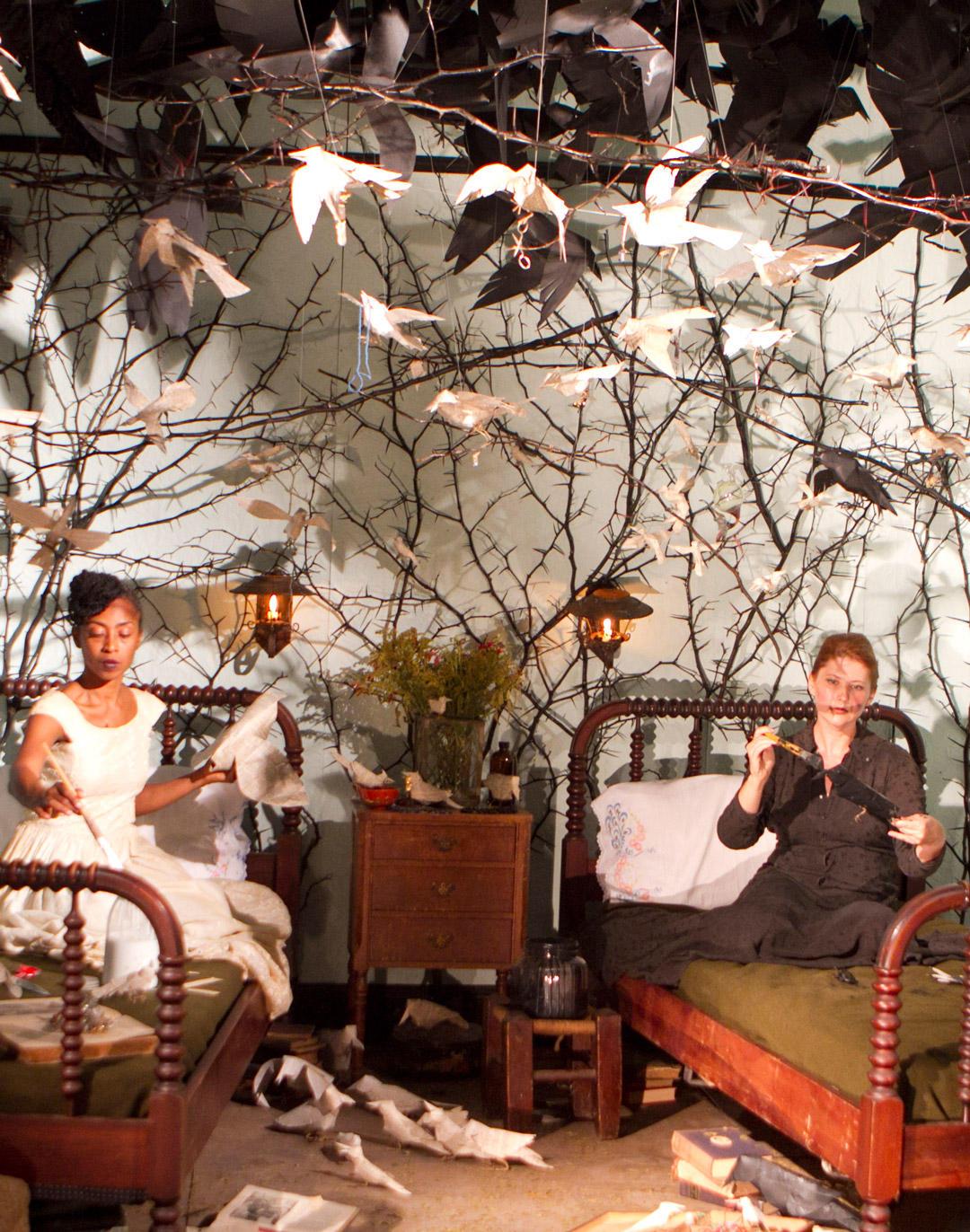
Photograph by Adam Davila
In 2009, an investment analyst named Louis Corrigan saw the opportunity for temporary public art to galvanize the city’s artists, who had been hit hard by the economic crash. Inspired by Le Flash, the previous year’s light-art extravaganza in Castleberry Hill created by Cathy Byrd and Stuart Keeler, Corrigan, a patron of modern dance troupe GloATL and other groups, fronted $200,000 to launch Flux Projects. The nonprofit has since produced ephemeral site-specific works around town, but it’s best known for hosting Flux Night, the one-night-only public art celebration. The event returns on September 27 after a two-year hiatus to host its first multinight showing in Grant Park. Here’s a look at its history.
2010
With a $110,000 budget, organizers commissioned 13 artists to create portraits, large-scale installations, and video projections—including Micah and Whitney Stansell’s short films screened on the Norfolk Southern Building overlooking the Gulch. “Flux Night helped Castleberry and its studios maintain their standing in Atlanta as a neighborhood of the arts,” says Anne Archer Dennington, Flux’s executive director. “It made us family in a way.”
2011
Forty artists produced 34 works including Street Preachin’, a dramatic performance using sacred imagery by Mark Basehore and James McConnell; a video simulation of rising sea levels by Eric Corriel; and photos of empty billboards projected by Gregor Turk.
2012
Kicking off with a jazz funeral that harkened back to the neighborhood’s past as a red-light district, Flux Night featured 104 artists and 14 projects along Walker and Nelson streets, including Dorothy O’Connor’s haunting live performance, Ceiling of Blackbirds, where actors sat among swirling birds, and a “sound cloud forest,” where visitors interacted with glowing sculptures to make melodies.
2013
Overseen by FLUX’s first guest curator, Helen Reckitt, a renowned curator and critic who had guided exhibits in Atlanta, Toronto, and London, the fourth year featured 20 different works and took over the entire neighborhood. The evening saw a grand piano pulled through the streets by a horse, a transparent “convenience store” lit by 2,000 lanterns, and a performance of black prisoner work songs by Michi Meko. The 20,000-plus crowd showed organizers that bigger is not always better; some attendees had difficulty finding the works, Dennington says. The one-night event then went on hiatus so Flux could focus on larger projects.
2015
With a budget of nearly $300,000, the event moved to the Martin Luther King Jr. National Historic Site in Old Fourth Ward, where New York–based curator Nato Thompson commissioned 12 installations inspired by the civil rights leader’s dream of peace and equality. Bad weather led to small crowds, and technical difficulties left some attendees disappointed. Aware that more and more funding was paying for portable toilets, permits, and police, Flux took a break to refine the event’s vision.
2018
For the first time in its eight-year history, the party will stretch over four days in Grant Park. Working with a budget of $90,000 (nearly 70 percent of the money will go to artists and their productions), the group has commissioned works that will envision the 135-year-old park’s past, the five streams running underneath it, and what Grant Park could become if its damaged tree canopy were restored. Selected artists include: Lauri Stallings of GloATL; Rebecca Makus, a lighting designer whose work has been featured in the Lyon Ballet; Rachel Garceau, who in 2015 decorated downtown with porcelain umbrellas; and Iman Person, whose performances and films have been shown as far away as Germany.
Future
Dennington says Flux would like to expand to Oakland Cemetery, along undeveloped green swaths on Memorial Drive, and into downtown, as well as a possible partnership with Atlanta Streets Alive. “As we have grown, there are people who want us to stay exactly the same,” Dennington says. “For an organization that is about helping people see Atlanta differently, it’s not exciting to see the same event over and over again.”
This article appears in our September 2018 issue.













